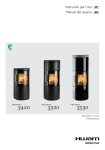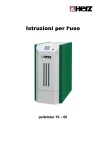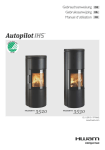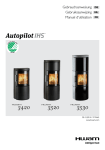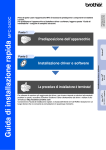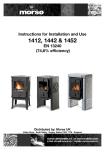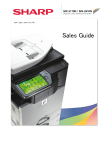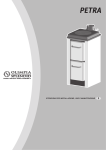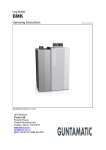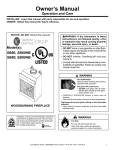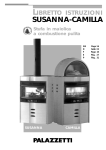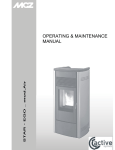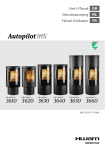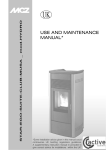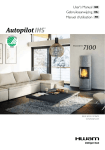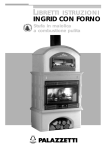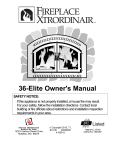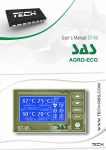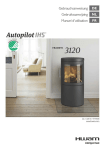Download Users manual Instruzoni per l`uso IT
Transcript
Users manual Instruzoni per l'uso GB IT 578 006 3420 3520 3530 05.12.2014 / 97-9662 www.hwam.com 2 Table of contents, English Drawings . . . . . . . . . . . . . . . . . . . . . . . . . . . . . . . . . . . . . . . . . . . . . . . . . . . . . . . . . 4-5 HWAM Autopilot IHSTM. . . . . . . . . . . . . . . . . . . . . . . . . . . . . . . . . . . . . . . . . . . . . . 6 Installation. . . . . . . . . . . . . . . . . . . . . . . . . . . . . . . . . . . . . . . . . . . . . . . . . . . . . . . . . . 7 Remote control. . . . . . . . . . . . . . . . . . . . . . . . . . . . . . . . . . . . . . . . . . . . . . . . . . . . 11 Firing manual - wood. . . . . . . . . . . . . . . . . . . . . . . . . . . . . . . . . . . . . . . . . . . . . . . 14 Firing in general. . . . . . . . . . . . . . . . . . . . . . . . . . . . . . . . . . . . . . . . . . . . . . . . . . . . 17 Maintenance. . . . . . . . . . . . . . . . . . . . . . . . . . . . . . . . . . . . . . . . . . . . . . . . . . . . . . . 18 Operational problems . . . . . . . . . . . . . . . . . . . . . . . . . . . . . . . . . . . . . . . . . . . . . . 19 Declaration of Performance. . . . . . . . . . . . . . . . . . . . . . . . . . . . . . . . . . . . . . . . . . 20 Type plate. . . . . . . . . . . . . . . . . . . . . . . . . . . . . . . . . . . . . . . . . . . . . . . . . . . . . . . . . 37 Indice, Italiano Disegni. . . . . . . . . . . . . . . . . . . . . . . . . . . . . . . . . . . . . . . . . . . . . . . . . . . . . . . . . . . 4-5 HWAM Autopilot IHSTM . . . . . . . . . . . . . . . . . . . . . . . . . . . . . . . . . . . . . . . . . . . . 22 Istruzioni per l’installazione. . . . . . . . . . . . . . . . . . . . . . . . . . . . . . . . . . . . . . . . . . . 23 Il telecomando. . . . . . . . . . . . . . . . . . . . . . . . . . . . . . . . . . . . . . . . . . . . . . . . . . . . . 27 Uso iniziale della stufa. . . . . . . . . . . . . . . . . . . . . . . . . . . . . . . . . . . . . . . . . . . . . . . 30 Ragguagli generali . . . . . . . . . . . . . . . . . . . . . . . . . . . . . . . . . . . . . . . . . . . . . . . . . . 33 Manutenzione. . . . . . . . . . . . . . . . . . . . . . . . . . . . . . . . . . . . . . . . . . . . . . . . . . . . . 35 Disturbi del funzionamento. . . . . . . . . . . . . . . . . . . . . . . . . . . . . . . . . . . . . . . . . . 36 Dichiarazione di prestazione. . . . . . . . . . . . . . . . . . . . . . . . . . . . . . . . . . . . . . . . . 36 Taga dati. . . . . . . . . . . . . . . . . . . . . . . . . . . . . . . . . . . . . . . . . . . . . . . . . . . . . . . . . . 37 3 A. 1 1 45˚ 2 1 4 3 3 4 B. C. 11 4 9 11 3 10 12 17 14 14 16 13 4 1 14 12 2b 6 15 15 3 5 2a 8 4 F. E. 6 4 3 5 2 1 5 HWAM Autopilot IHS™ English Congratulations on your new wood-burning stove complete with a HWAM Autopilot IHSTM IHS is short for “Intelligent Heat System”, which is a digital control of the combustion in your new wood-burning stove. The purpose of the HWAM Autopilot IHSTM is to control the combustion in an environmentally optimal and economically efficient way, with a view to generating greater user comfort. The HWAM Autopilot IHSTM is a completely new patented technology, which electronically adjusts the air supply to the combustion chamber.Your new wood-burning stove continually measures the temperature and the oxygen levels of the combustion. Moreover, it is programmed to supply oxygen to the fire through three important air inlets in the right amount, and at the right time and place in the combustion chamber. Via a simple remote control, the user can adjust the thermostat to the desired heat level, while continually receiving information about room temperature and optimal stoking times that ensure environmentally friendly and economical combustion. Your new wood-burning stove and the HWAM Autopilot IHSTM will ensure the cleanest possible combustion as well as a good fuel economy, regardless of external conditions such as the type of firewood used, the chimney, the user’s experience, and other external circumstances. The HWAM Autopilot IHSTM consists of the following components: • Air box: the Air box contains a printed circuit board/software, as well as three motors that control primary, secondary, and tertiary combustion air.The fresh air system can be mounted on the Air box to the rear or in the bottom. • Two sensors: a temperature sensor and an oxygen sensor transmit information from the woodburning stove to the Air box. • Remote control and wall-mounted stand: the remote control, complete with batteries, is placed at a minimum of two meters from the wood-burning stove. The wireless remote control measures the room temperature and transmits the information to the Air box. • Electricity supply: from the Air box to the nearest wall socket. Wood-burning stove with HWAM Autopilot IHSTM Oxygen sensor Temperature sensor IHS Remote control 2.4 GHz RF link Primary air Secondary Tertiary air air Air box air inlet Connection to fresh air system IHS Airbox Electricity supply USB connection 6 Installation General information Installation of your HWAM woodburning stove must always comply with local building regulations. It is a good idea to consult your local chimney sweep before installing, since he will be the one to sweep the chimney and stove. Always follow the instructions of the manual carefully and make sure that the installation is carried out by a qualified professional. HWAM packaging material should always be handled in accordance with the local rules for waste handling. Room requirements There must be a constant supply of fresh air to the room in which the stove is to be installed. The woodburning stove uses approx. 11-14 m3 air per hour. In comparison, a modern cooker hood sucks up to 1000m3 air per hour. A window that opens or an adjustable air vent should be sufficient, but it is also possible to connect the stove to a HWAM combustion air system. The air inlet/grating must be placed so that they do not become blocked. Please be aware that not all glass parts are heat-resistant. For this reason, a glass wall should sometimes be treated as a flammable wall, in which case we ask you to contact your local chimney sweep or glass producer to hear at what distance the stove should be kept from glass. Load-bearing capacity of floor Before installing the stove, you must ensure that the load-bearing capacity of the floor can withstand the weight of the stove and the chimney. The weight of the chimney should be calculated according to its dimensions and height. Technical data Model HWAM 3420c/3420m HWAM 3420c/3420m, soapstone HWAM 3520c/3520m HWAM 3520c/3520m, soapstone HWAM 3530c/3530m HWAM 3530c/3530m, soapstone Heat storing slabs, HWAM 3520 Heat storing slabs, HWAM 3530 Weight 107/104 kg 149/146 kg 118/115 kg 167/164 kg 131/128 kg 191/188 kg 44 kg 77 kg Height Width Depth 100,6 cm 101,4 cm 125,8 cm 126,8 cm 143,8 cm 144,8 cm 54,0 cm 54,0 cm 54,0 cm 54,0 cm 54,0 cm 54,0 cm 37,1 cm 37,1 cm 37,1 cm 37,1 cm 37,1 cm 37,1 cm The stove is mainly made of sheet iron, with some items made of cast iron. The HWAM Autopilot IHSTM is an electronic product primarily consisting of plastic, a printed circuit board and wires. Test results from nominal test EN 13240 Nominal heating effect Smoke temperature Exhaust gas flow Efficiency The test result according to NS 3058 Particle emission 4.5 kW 238 ºC 3.66 g/s 83.4 % 2.45 g/kg 7 Distance to inflammable materials Your HWAM woodburning stove should always be installed on a non-combustible hearth. If it is installed on a wooden floor or similar, the floor must be covered with a non-combustible material. HWAM 3420, HWAM 3520, HWAM 3530 (Drawing A) 10 cm 1. Recommended for brick wall 10 cm 1. For inflammable back wall 20 cm 2. For inflammable side wall 13 cm 1.To inflammable wall,corner installation* 80 cm 3. Distance to furnishings in front *All dimensions in connection with corner installation are only recommendations. Contact your chimney sweep for a clarification. Remember to pay attention to any regulations concerning the required distance between the wall and smoke pipe. The distance to a brick wall is set to faciliate the servicing of the HWAM Autopilot IHSTM. Please be aware that not all glass parts are heat-resistant. For this reason, a glass wall should sometimes be treated as a flammable wall, in which case we ask you to contact your local chimney sweep or glass producer to hear at what distance the stove should be kept from glass. Requirements for chimney and smoke pipe The chimney must be of a sufficient height to enable an adequate draft and to prevent smoke problems. The stove requires a draft of at least 12 Pa. The chimney must have a minimum opening equivalent to Ø 150 mm.The chimney opening should always be at least the size of the outlet socket of the stove.The chimney must have an easily accessible soot door. Smoke pipe and chimney must always be suitable for a stove connection. Ask your HWAM dealer for more information. Smoke pipe and chimney must always be suitable for a stove connection. Ask your HWAM dealer for more information. Connection to chimney All the stoves have both rear and top smoke outlet that can be connected to an approved steel chimney on top or directly out at the rear to a chimney. Make sure that the chimney is tight and that no false draft is caused around neither the cover plate, in connection with a covered smoke outlet, nor the cleanout door and pipe connections. Please note that bent and/or horizontal smoke pipes will reduce the effect of the chimney draft. Vertical cross-section of smoke flue (Drawing B and C) B: Top smoke outlet C: Rear smoke outlet • Steel chimney (9). • Flue gas elbow (10). Fits into smoke flue socket. • Brick-built jamb of flue (11). • Built-in pipe sleeve (12). Fits smoke flue. • Wall rosette (13). Covers disruption to wall around pipe sleeve. • Joint (14). Sealed with packing material. • Smoke outlets (15) of the HWAM stove. • Smoke flue regulating damper (16). • Soot door (17). 8 Fitting the loose parts Before the stove is installed, you must ensure that all loose parts are fitted correctly. Vertical cross-section of the stoves (Drawing B): • The smoke shelf (5). To be placed on top of the steel rail and on the holders in the sides. • Two-piece smoke defector plate (6). Each half is hung on the hooks located beneath the top plate.The two halves join in the holders behind the air pipe. Once the stove has been installed, twist the protection off the two hooks by using pliers or a screwdriver. • Removable rear plate (2a), covering Autopilot controls. This must always be mounted if the stove is placed next to a combustible wall. • Removable heat shield (2b) - HWAM 3520/3530. This must always be mounted if the stove is placed next to a combustible wall. • Loose heat shield (8) under the ash pan. This can be used as a lid when the ash pan is removed for emptying. Connecting and preparing the HWAM Autopilot IHSTM 1. Connect the plug a)to a normal 230V socket b)to the Air box in the wood section underneath the combustion chamber (lead the plug through the air slot at the bottom between the side and rear plates - on the left side of the wood-burning stove when seen from the front. There is a mark on the Air box where the plug should be let in. See the photo of the power supply on the Air box. Air box without power supply. Air box with power supply. 2. Insert three AA batteries in the remote control. When the IHS logo disappears from the display, the remote control is ready to use. 3. The remote control and the wood-burning stove must be connected (the factory will see to this). If the status line at the bottom of the display is clear (empty) ( )and divided into three sections, the wood-burning stove and the remote control are connected. If the status line is dotted ( ), the remote control and the wood-burning stove are not connected. Start with a display in which the light is off, and make the connection by pressing and holding down the button, so the advanced menu is displayed.Then press the button repeatedly in short intervals until the text ”Link to stove” is highlighted and wait until it enters this menu. Press the button in short intervals until the text “Connect” is highlighted and wait again.When the text "Please cycle stove power" appears on the display, disconnect the electricity from the Air box and then reconnect. Press the button once more. If the message "Connected to stove" shows up in the display, the wood-burning stove and the remote control are connected. Press the button once to return to the main menu. If you do not press the button again, the remote control automatically leaves the menu and returns to the start display. 4. Go through the self-test of the HWAM Autopilot IHSTM: The self-test of the electronic control is carried out before lighting the first fire in the stove (the factory will see to this). The self-test can only be done when the wood-burning stove is cold and in standby mode (no signal in the status line ). Make sure that the display is not active, i.e. there should be no light in the display ( ). If there is light in the 9 display before you hold down the button for a while, you will instead prepare the wood-burning stove for lighting (the matchbox will appear in the display) and no self-test can be carried out. Press the remote control button for approx. 5 seconds in order to enter the menu. Press the button until the cursor reaches “Self-test”. Wait a few seconds till the remote control enters the “Self-test” menu. Press the button till the cursor reaches “Engage”. A few seconds later the self-test begins. By going through a self-test you ensure that all basic operations function correctly. A self-test consists of four test types: • A software test • A test of the temperature sensor and calibration • A test of the lambda sensor and calibration • A test of the three motor valves and calibration The remote control will respond with the text ”Pass” if everything is OK or ”Failed” if there is a problem.The remote control will also respond with the text "Failed" if you, prior to self-test with the remote control, have prepared the wood-burning stove for lighting up a fire (made the match box appear on the display). If the electric power is cut and switched on again, the programme will return to standby and the self-test can be carried out. If the remote control responds with the text "Not completed", the self-test could not be carried out, either because the wood-burning stove has not cooled off or because it is not in standby mode. 5. The remote control must be placed in the same room as the wood-burning stove and in a location where it is neither exposed to direct heat radiation from the stove nor to direct sunlight. The reason is that the remote control functions as a thermometer.The room temperature is transmitted wirelessly to the stove’s electronic control to support the intelligent regulation of the combustion. The remote control stand can be mounted on the wall. Chimney The chimney is the “engine” of the stove and it is crucial for the functioning of the woodburning stove. The chimney draft provides a partial vacuum in the stove. The partial vacuum removes the smoke from the stove, sucks air through the damper to the so-called pane flush mechanism, which keeps the window pane soot free, and sucks air into the combustion via the HWAM Autopilot IHSTM. The chimney draft is created by the differences in temperature inside and outside the chimney. A brick chimney takes longer to warm up than a steel chimney. On days where the weather and wind conditions create insufficient draught inside the chimney, it is even more important to warm up the chimney as quickly as possible.The trick is to quickly get some flames going. Split the wood into extra fine pieces, use an extra firelighter, etc. If the stove has not been used for a longer period, it is important to check that the chimney pipe is not blocked. It is possible to connect several devices to the same chimney. However, it is important to first check the applicable rules. Even a good chimney can function badly if it is not used correctly. Similarly, a bad chimney may function well if used correctly. Chimney sweeping To prevent the risk of chimney fires, the chimney must be cleaned every year.The flue duct and the smoke chamber above the baffle plate must be cleaned together with the chimney. If the chimney is too tall to be cleaned from above, it must be equipped with a soot door. 10 In case of a chimney fire and overheating, the HWAM Autopilot IHSTM will enter a security mode and automatically adjust all dampers, effectively quenching the fire. Do not open the stove door, since that might cause the fire to rekindle. Contact the fire brigade. After a fire, the stove should be checked by a chimney sweep before use. The Remote control The remote control is the user interface of the HWAM Autopilot IHSTM. The remote control measures the actual room temperature. It must hence be placed in a location in the room, where it is not affected by unnaturally high temperatures, such as the wood-burning stove’s radiation heat or direct sunlight. On the remote control you enter the desired heat level, as you would on a radiator thermostat.Via radio waves the remote control sends information to the stove’s Air box (control system) about the present room temperature as well as the desired heat level. Below you will find the functions of the remote control.As a point of departure, the normal display image of the remote control will show four points: 20° C 1) The room temperature 2) The battery level of the remote control 3) The adjustment of the thermostat (the heat level selected) 4) The status line (shows the combustion phases) Button: Short pressure – in the start phase or the combustion phase = adjustment of the thermostat (desired heat level) Short pressure – in standby or the burning out phase = start the wood-burning stove, i.e. prepare the stove for lighting up. Long pressure – can only be carried out when there is no light in the display = advanced menu Symbol Description IHS IHS-logo Visible when the remote control is switched on, for instance when the batteries are changed. 21°C Room Temperature The room temperature is shown in the centre of the display.The room temperature is measured in the location of the remote control.The actual room temperature is used both when controlling the combustion and in connection with the timing of the re-stoking alarm. The remote control should hence not be placed close to the stove or in direct sunlight, since it will be affected by unnaturally high heat levels. Battery level The battery level of the remote control. When the batteries are at a minimum level, they need to be changed. Expected battery life at normal use is approximately ½-1 year. 11 Thermostat adjustment The HWAM Autopilot IHSTM has a thermostat function, which attempts to keep the room temperature at the desired level. The thermostat works like a radiator. Use the remote control to choose the level you want and the temperature that suits your rooms. The thermostat function can be adjusted to six different levels: (Level 0 - 5, where level 3 is a medium temperature of approx. 22-24 °C). Level 0: regulates to the slowest combustion (3-4 kW) no room temperature control. Level 1-2: regulates to low room temperature (approx. 18-22 °C) Level 3: regulates to middle room temperature (approx. 22-24 °C) Level 4: regulates to high room temperature (approx. 24-26 °C) Level 5: regulates to the maximum room temperature (approx. 27-29 °C).This level aims to reach the highest possible room temperature in the shortest possible time. This choice can be an advantage if you want to heat up an unheated room as quickly as possible. When the temperature in the room approaches the desired level, the desired heat level is entered on the remote control. The Status Line The status line appears at the bottom of the display. It shows where in the combustion the system is located. Not in contact with the Air box. In contact – but in standby mode. The initial phase of the combustion. The process phase of the combustion. The burning out phase of the combustion. Ligthing the fire: The woodburning stove is ready to be lit and opens the dampers.The symbol appears when you press the remote control twice in either standby or burning out modes. The symbol is also shown if you press the remote control twice in the burning out phase. In this case it does not mean that you need to light up again. This is merely information that you have asked the stove to open the dampers and thereby ensure that the new firewood gets sufficient air to catch fire. 12 The restoking alarm When the combustion progresses to the ember phase, a restoking alarm will go off. The alarm will light up three times with a ten second interval and it is supported by sound. Three different amounts of wood are recommended for restoking: A small amount of wood (700 - 1200 g) A medium amount of wood (1000 - 2000 g) A large amount of wood (1800 - 3000 g) You must use at least two pieces of firewood at a time, even if you only want to use a small amount of wood.The temperature causes the wood to gasify.Two pieces of firewood heat up each other and increase their temperature faster. A reminder of the restoking alarm If a restoking alarm has gone off, and no restoking has been carried out, this symbol will flash on and off in the upper left corner. If the symbol has been displayed for a long time, the temperature in the flue gasses can be so low that you have to light up again in order to give the stove more air (this is done by pressing the remote control twice, causing the lighting up symbol to appear in the display). Always be aware that the status line changes from the burning out phase to the combustion process phase when the stove is relit. Thereby you ensure that the stove has registered that you have added new firewood which requires an adequate amount of air. The oxygen level in the combustion compartment increases when the door is opened. This sends a signal to the stove that new firewood has been added to the fire.Towards the end of the burning out phase, the oxygen level in the combustion compartment can be so close to the oxygen level in the room that the increase in the oxygen level in the combustion compartment due to the opening of the door cannot be registered. If, shortly after relighting, the status line does not alter from burning out phase to combustion process phase, you should press the remote control twice until the lighting up symbol (the matchbox) appears. Updating Updating When the Air box is updated with new software (by a service technician), this will be displayed graphically. 13 Advanced menu The remote control has a menu in which more advanced settings, etc. can be changed. By pressing the button on the remote control for more than five seconds, you get into the advanced menu: These are the main menus: • Sound (turn the sound on and off) • Self-test (initiate the "Self-test", for instance when a service technician visits) • System info (which version of the software is in the Air box and in the remote control respectively) • Link to stove (should be applied when a remote control is matched with an Air box. This should be done at the factory) Maintenance alarms If a maintenance alarm goes off, you can continue using the stove. However, you should contact your dealer as soon as possible. Remember to mention the error code that appears in the display. The wood-burning stove could be affected by impure combustion. Security alarms If a security alarm goes off, you must not use the wood-burning stove. Contact your dealer as soon as possible. Remember to mention the error code that appears in the display. Information about removal and recycling The remote control contains batteries and must hence be disposed of separately in accordance with the HWAM A/S • www.hwam.com national rulesxxxxxxxxxx and regulations in force. Serial number: RoHS Compliant 2002/95/EC Regulatory compliance information Complies with the requirements in the European Directives 72/23/EEC and 2004/108/EEC. Firing manual - wood The lacquer will be fully hardened after the stove has been used, and the door and the ashpan should be opened very carefully as there will otherwise be a risk that the gaskets will stick to the lacquer. In addition the lacquer may initially give off an unpleasant odour, so make sure that the room is well ventilated. Tips about fuel Approved fuel types The wood burning stove is EN approved for combustion of wood only. It is recommended to use dried chopped wood with a water content of a maximum of 20%. Stoking a fire with wet wood results in soot, environmental problems, and a less efficient fuel economy. Recommended wood types All types of wood, for instance birch, beech, oak, elm, ash, conifers, and fruit trees can be used as fuel in your wood burning stove.The great difference is not in the fuel value, but in the weight of the wood types per cubic metre. Since beech weighs more per cubic metre than for instance common spruce, it will take more common spruce to produce the same amount of heat that you would get from a cubic metre of beech. 14 Banned fuel types It is not allowed to stoke a fire with the following: printed matter, plywood, plastic, rubber, fluid fuels, and rubbish such as milk cartons, lacquered wood or impregnated wood and fossil fuels. The reason that you should not apply any of the above is that during combustion they develop substances that are health hazardous and harmful to the environment.These substances could also damage your wood burning stove and chimney, rendering the product warranty void. Storage of wood The wood’s water content of a maximum of 20% is reached by storing the wood for a minimum of one year, preferably outdoors in an open shed exposed to sun and wind. The wood must be dry (max. 20% water contents) before it is stored indoors. It is recommended that kindling wood is stored indoors for a couple of days prior to use. Recommended dimensions The dimensions of the fuel are important to good combustion. The dimensions should be as follows: Fuel type Length in cm Diameter in cm 25-30 25-30 2-5 7-9 Wood for kindling a fire (finely chopped) Chopped wood Special lighting guide for wood-burning stoves with soapstone cladding Soapstone is a natural product, which needs to get used to the changes in temperature. For this reason you should be very careful the first times you light up the stove. It is recommended that you follow the procedure outlined below: 1.The First Stoking (Soapstone) Place two pieces of wood (5-8 cm in diameter) horizontally in the bottom of the combustion compartment. Place 5-8 pieces of kindling randomly on top. Place two fire-lighters in between the top layers of kindling. Press the remote control twice to activate the symbol of lighting up. Light up the fire-lighters and close the stove door. Adjust the temperature selection mechanism on the remote control to level one. Let the fire burn out and do not restoke even if there is a restoking alarm. When the fire has died out completely, the door must be opened and stay open while the stove cools down to room temperature. 2.The Second Stoking (Soapstone) Place two pieces of wood (5-8 cm in diameter) horizontally in the bottom of the combustion compartment. Place 5-8 pieces of kindling randomly on top. Place two fire-lighters in between the top layers of kindling. Press the remote control twice to activate the symbol of lighting up. Light up the fire-lighters and close the stove door. Adjust the temperature selection mechanism on the remote control to level two. When there is a restoking alarm, you should restoke. Fill the combustion chamber half way up with dry wood of a diameter of approx. 7-9 cm. Let the fire burn and let the stove cool down to room temperature before the next lighting. 3.The Third Stoking (Soapstone) Repeat the second stoking, but use more wood this time and adjust the temperature selection on the remote control to level three. Let the fire burn and allow the stove to cool down after the fire has died out. Restoking: Follow the general instructions, see the sections “Lighting the stove” and “Stoking”. Lighting Up A successful combustion process requires that the wood is lit in the right way. A cold stove and a cold chimney challenge the combustion process. It is important to achieve a high flue gas temperature quickly. Only at temperatures around 350° C will environmentally friendly combustion take place. 15 Place two pieces of wood (5-8 cm in diameter) horizontally in the bottom of the combustion compartment. Place 5-8 pieces of kindling randomly on top. Place two fire-lighters in between the top layers of kindling. Press the remote control twice to activate the symbol of lighting up. Light up the fire-lighters and close the stove door. Adjust the temperature selection mechanism on the remote control to the desired heat level. If the desired flue gas temperature of 350° C has not been achieved within 15 minutes, the remote control will activate a re-stoking alarm even if there still might be wood and flames in the combustion compartment. The re-stoking alarm can seem misplaced, but it is activated because the temperature climbs too slowly. Re-stoking with small pieces of kindling wood can often result in a faster increase in temperature. HWAM Autopilot IHSTM closes all three air dampers when the stove is in standby mode. This prevents hot air from the room to enter the chimney (heat loss). This might on the other hand result in a very cold chimney when the stove is lit. In certain cases it is necessary to assist the draught in the chimney by burning a couple of newspaper pages on top of the wood ready to be lit. Read more on www.hwam. com about the function of the chimney. Important! The ashpan must not be opened when lighting up. It must always be closed when the stove is in use. Otherwise the stove’s intelligent control system does not function.The door should only be opened when lighting up, when restoking, and when cleaning the stove. The Thermostat Function The HWAM Autopilot IHSTM will in general have an environmentally friendly combustion and adapt to the desired room temperature. The thermostat function is designed as a radiator valve. The user enters a desired heat level, which suits the room in which the stove is installed. When the thermostat is set at a heat level, the control function will adapt to this temperature. • If the room temperature is lower than the desired heat level, the control function increases the flue gas temperature in order to increase the heat radiation from the stove. • If the room temperature is higher than the desired heat level, the control function decreases the flue gas temperature, thereby giving the layer of embers as long a life as possible before re-stoking.This will reduce the heat radiation from the stove and facilitate re-stoking without having to light up the fire anew. If the room temperature drops below the desired level, the ember phase will be shortened, and the system will activate a re-stoking alarm.The system will signal that a re-stoking is due at the flue gas temperature of 180° C, and at 100° C the system will enter standby mode and all dampers will close. • Should the room temperature be much lower than the desired heat level, the control function increases the flue gas temperature. If a satisfactory increase in temperature does not occur, the control will activate a re-stoking alarm, since it expects that more wood is needed to increase the heat level in the room. • If the room temperature after a new re-stoking still does not reach the desired level, the water content in the firewood may be too high or the draught in the chimney too weak. For environmental reasons the recommended flue gas temperature should always be a min. of 350° C. Stoking When the stoking alarm on the remote control sounds, the stove is ready for stoking.The remote control will recommend the amount of wood you should use. Small amount of wood (700 - 1200 g) Medium amount of wood (1000 - 2000 g) Large amount of wood (1800 - 3000 g) In terms of combustion technique, you should always stoke the stove with at least two pieces of wood at a time even if you only use a small amount of wood.You can also choose not to restoke. After a while the stove will then automatically go into hibernation. 16 In exceptional cases the system might not register that the stove has been re-stoked. This can occur if the oxygen level in the combustion compartment, due to the low flue gas temperature, reaches a point where the system fails to register an increase in the oxygen level in spite of the stove door having been opened. After stoking, the status line should therefore be checked on the remote control. Shortly after the lighting of the wood, the middle section of the remote control, representing the combustion process phase, should light up ( ). If it enters standby mode, press the remote control twice, so the match symbol is displayed. During combustion, the outer surfaces of the stove will become hot, and due care must therefore be shown. Firing with coal, briquettes and coke Burning coal and coke is not possible in this stove since there is no room for a coal insert. Briquettes can be used however. These are placed onto the wood embers. Remember that after this the regulating rod must be closed again. Be aware that using fuels other than wood, will cause soot to form on the glass pane. Operating the heat compartment damper - HWAM 3520/3530 There is a damper at the back of the stove between the top plate and the heat compartment that opens and closes the flow of convection air in the heat compartment.The supply of convection air can be opened by moving the damper to the left and closed by moving the damper to the right. We recommend that the convection damper is kept closed when fuelling the stove in order to heat up and thereby store heat in the soapstone interior of the heat compartment as rapidly as possible. Keeping the convection damper closed retains the heat stored in the soapstone as long as possible.When the damper is opened, the heat from the soapstone in the heat compartment will rapidly be transferred to the room. Firing in general Rapid or fierce heat Rapid or fierce heat is obtained by burning many small pieces of wood. Maximum amounts of fuel: The maximum allowed amount of fuel per hour is: Wood: 2.4 kg If these limits are exceeded, the stove will no longer be covered by the factory guarantee, and it may also become damaged due to excessive heat. The stove has been approved for intermittent use. Typical re-firing interval Typical re-firing interval at nominal performance Wood: 65 min Long burning times You achieve the slowest combustion by setting the desired room temperature at level 0. At this level the combustion takes place with the lowest possible flue gas temperature and the ember phase will be drawn out as long as possible. How to achieve the best combustion The HWAM Autopilot IHSTM is purposely designed to generate the cleanest and the most economical combustion. A good combustion is achieved when the fire gets the right amount of oxygen supply at the right time and place in the combustion chamber. The HWAM Autopilot IHSTM allows for variations 17 in external circumstances. Nevertheless, it is important to use clean and dry wood (humidity approx. 16-20%). Read more on www.hwam.com. Cleaning the glass We recommend wiping the glass after a fire. This is best done using a paper towel. Types of fuel The stove may be damaged by very high temperatures and the glass may turn white, for example.This can be avoided by never allowing the stove to burn with the ashpan open and taking great care with types of fuel that develop excessive heat, such as briquettes. If the flue gas temperature exceeds 580 oC, the HWAM Autopilot IHSTM will revert to safety adjustments and automatically turn down the air valves to avoid overheating. When the temperature is reduced to 450 oC, the normal functions apply again. It is recommended that you use birch or beech wood that has been chopped and stored for at least one year in an open shed exposed to sun and wind.The wood must be dry (max. 20% water contents) before it is stored indoors. It is recommended that kindling wood is stored indoors for a couple of days prior to use. Briquettes give off a lot of heat. Certain types expand considerably, thus causing an uncontrollable combustion. Coal burns at a high temperature and makes a lot of soot. Coal must be burned using the coal insert. Not suitable for fuel in these models. Coke burns at a high temperature and makes a lot of soot. Coke must be burned using the coal insert. Coke causes severe wear and tear to stove and combustion chamber and, consequently, this considerably reduces the life expectancy of the stove and chimney. Not suitable for fuel in these models. The stove is EN 13240 approved for firing wood only. No particle board, lacquered, painted or treated wood, plastics, or rubber may be burned. Maintenance Cleaning Any maintenance of the stove should only be carried out when it is cold. Daily maintenance is limited to vacuum cleaning the stove externally, using the soft brush attachment.You can also dust the stove using a dry, soft cloth or brush. But remember, only when the stove is cold. Do not use water, spirit or any other kind of cleaner, as this will damage the lacquer. Once a year, the stove should be thoroughly serviced. The combustion chamber should be cleared of ashes and soot. The hinges and the closing hook must be greased with liquid copper fat spray (heat-resistant up to 1100°C), see drawing F. Lift the door approx. ½ cm and spray copper fat onto the hinge leaf. Service inspection Your stove should be given a thorough, preventive inspection once every two years.This includes: • Thorough cleaning of the stove. • Checking gaskets. Replace gaskets if they are not intact or have softened. • Checking of heat insulating material and possibly replacement. • Checking of the bottom/shaking grate. • Use copper grease for hinges and locking hooks (see drawing F). All service checks must be performed by an authorised fitter. Use only original spare parts. 18 Inside cleaning The smoke shelf and baffle plate is to be removed from the stove before cleaning (Drawing E). • First lift the smoke shelf (1) out of the steel rail (2) at the back of the combustion chamber. Next, lower it beneath the holders (3) and slide it out. • Lift each half of the steel smoke plate (4) off the holder (5) behind the smoke pipe, and remove them from the hook (6) beneath the top plate. Ashes The ash pan is best emptied by pulling a waste bag over the pan, tipping it and then carefully pulling it out of the bag. Ashes are disposed of via the domestic waste collection. Please note that there may be embers in the ashes for up to 24 hours after the fire has gone out! Insulation The efficient, but porous insulation of the combustion chamber may, in time, become worn and damaged. Cracks in the insulation have no effect on the efficiency of the stove. The insulation should be replaced, however, when it is reduced to less than half the original thickness due to wear and tear. Door/glass A sooty glass door can easily be cleaned with a piece of moist kitchen roll dipped in ash. Go about it in vertical movements (up and down). Follow up with a dry piece of kitchen roll. Check frequently to ensure that seals in the door and ash pan are intact and not brittle. Failing this, they should be replaced. Use original seals only. Surface The surface normally requires no treatment. Any damage to the coating may be remedied using a Senotherm spray. Guarantee The guarantee does not cover damage due to insufficient maintenance! Maintenance Alarms If a maintenance alarm goes off, you can continue using the wood-burning stove, but contact your dealer as soon as possible.Your stove could be affected by impure combustion. Operational problems Blackened glass • The wood is too damp. Only use wood stored for at least 12 months under cover and with a moisture level not exceeding 20% RH. • Faulty seal in door. Fit new seal. Smoke in the room when opening door • The grate in the chimney may be closed. Open the grate. • Insufficient chimney draft. See section on chimney or contact chimney sweep. • Soot door leaking or dislodged. Replace or refit. • Never open the door when there are still flames on the wood. 19 Uncontrollable combustion • Faulty seal in door or ash pan. Fit new seal. Safety Alarms In case the safety alarms go off, you must not use the stove. Contact your dealer as soon as possible. At interruptions that you cannot yourself rectify, you should contact the dealer. Declaration of Performance The DoP can be downloaded from our website via the following links: HWAM 3420 with Autopilot IHSTM: www.hwam.com/dop/3420ihs HWAM 3520 with Autopilot IHSTM: HWAM 3530 with Autopilot IHSTM: www.hwam.com/dop/3520ihs-3530ihs www.hwam.com/dop/3520ihs-3530ihs 20 21 HWAM Autopilot IHS™ Italiano Congratulazioni per l'acquisto di una stufa a legna con HWAM Autopilot IHSTM. IHS significa “Intelligent Heat System”, ovvero “sistema di riscaldamento intelligente”, ed è un dispositivo digitale per la regolazione della combustione nella stufa. La funzione di HWAM Autopilot IHSTM è ottenere una combustione pulita ed economica che garantisca al tempo stesso il massimo comfort per l’utente. HWAM Autopilot IHSTM si basa su un’innovativa tecnologia brevettata che regola elettronicamente l’apporto d’aria alla camera di combustione. La stufa monitorizza la temperatura e l’ossigeno durante la combustione ed è programmata per alimentare le fiamme con un ulteriore apporto di ossigeno attraverso 3 importanti canali d’aria secondo quantitativi e tempi adeguati e nel punto corretto della camera di combustione.Attraverso il telecomando è possibile impostare il termostato sulla temperatura desiderata, rilevare la temperatura ambiente e ottenere informazioni sul momento migliore per alimentare la stufa in termini di ecologia e di risparmio energetico. La nuova stufa con HWAM Autopilot IHSTM garantisce pertanto una combustione pulita ed economica indipendentemente da fattori esterni come il tipo di legna, le condizioni della canna fumaria, l’esperienza dell’utilizzatore e altre circostanze. HWAM Autopilot IHSTM consiste di: • Airbox: L’Airbox è costituito da un circuito stampato/software e da 3 motori che regolano l’aria di combustione primaria, secondaria e terziaria. Il sistema di apporto di aria esterna può essere montato sul retro o sulla base dell’Airbox. • 2 sensori: Un sensore termico e un sensore dell’ossigeno inviano dati dalla stufa all’Airbox. • Telecomando con supporto da parete: Il telecomando a pile deve essere collocato ad almeno 2 metri di distanza dalla stufa. Il telecomando rileva la temperatura ambiente e invia i dati all’Airbox con collegamento wireless. • Alimentatore: Dall’Airbox alla presa di corrente più vicina. Stufa con HWAM Autopilot IHSTM Sensore dell’ossigeno Sensore termico IHS Telecomando 2.4 GHz RF link Aria Aria Aria secondaria primaria terziaria Presa d’aria Airbox Collegamento del sistema di apporto di aria esterna IHS Airbox Presa di alimentazione Connettore USB (solo assistenza) 22 Istruzioni per l’installazione Norme di legislazione ambientale L'installazione delle stufe HWAM deve sempre avvenire secondo le prescrizioni di legge. È sempre bene consigliarsi con chi ha installato la canna fumaria. Requisiti del locale di installazione È necessario un apporto costante di aria di combustione pulita nel locale di installazione della stufa. La stufa consuma circa 11-14 m3 d’aria ogni ora.A titolo puramente indicativo, una moderna cappa per cucina aspira fino a 1000 m3 d’aria l'ora.A tale fine una finestra apribile o una valvola regolabile sono considerate sufficienti, ma è possibile anche collegare alla stufa un sistema di areazione. La valvola/griglia dell’aria deve essere collocata in modo da non essere ostruita. Basamento della stufa Prima di installare la stufa ci si deve assicurare che il pavimento possa sopportare il peso della stufa e della canna fumaria. Il peso della stufa canna fumaria si calcola a secondo della dimensione e dell'altezza. Il peso della stufa Modelli HWAM 3420c/3420m HWAM 3420c/3420m, rivestimento in pietra ollare HWAM 3520c/3520m HWAM 3520c/3520m, rivestimento in pietra ollare HWAM 3530c/3530m HWAM 3530c/3530m, rivestimento in pietra ollare Mattonelle di accumulio termico, HWAM 3520 Mattonelle di accumulio termico, HWAM 3530 Peso 107/104 kg 149/146 kg 118/115 kg 167/164 kg 131/128 kg 191/188 kg 44 kg 77 kg Altezza Larghezza Profondità 100,6 cm 101,4 cm 125,8 cm 126,8 cm 143,8 cm 144,8 cm 54,0 cm 54,0 cm 54,0 cm 54,0 cm 54,0 cm 54,0 cm 37,1 cm 37,1 cm 37,1 cm 37,1 cm 37,1 cm 37,1 cm Distanza da materiale infiammabile La stufa HWAM deve essere sempre messa su un pavimento ignifugo. Se la si pone su pavimenti in legno o simili, questi si devono coprire con piastre di materiale resistente al calore. HWAM 3420, HWAM 3520, HWAM 3530 (Disegno A) 1. Distanza consigliata da parete in muratura 1. Parete dietro, infiammabile 2. Parete di lato, infiammabile 1. Parete laterale in muratura, posizionamento in angolo* 3. Distanza mobili di fronte 10 cm 10 cm 20 cm 13 cm 80 cm *Le dimensioni per il posizionamento in angolo sono indicative. Per ulteriori informazioni, contattare il rivenditore. Prestare attenzione a eventuali normative circa la distanza tra parete e tubo di uscita fumi. Stabilire la distanza dal muro in modo da consentire l’accesso all’automatismo a fini di manutenzione. Ricordare che non tutto il vetro è termoresistente. Pertanto, in alcuni casi, le pareti di vetro dovranno essere considerate infiammabili. Per la corretta distanza da una parete di vetro rivolgersi allo spazzacamino di zona o al fabbricante del vetro. 23 Requisiti della canna fumaria L'altezza della canna fumaria deve consentire un buon tiraggio. Il tiraggio nominale è di 12 Pa. Il diametro minimo della canna fumaria deve essere di 150 mm e questa deve essere sempre provvista di uno sportello per la pulizia. Collegamento alla canna fumaria Tutte le stufe della serie hanno lo scarico fumi superiore o posteriore. Possono essere montate con una canna fumaria in acciaio omologata o collegate a una canna fumaria in muratura. Sezione verticale della canna fumaria (Disegno B e C): B: Uscita del fumo superiore C: Uscita del fumo posteriore • Canna fumaria (9) in acciaio. • Gomito HWAM (10) con isp.e valvola. • Supporti murati (11) della canna fumaria. • Foro nel muro (12). Combacia con l'entrata in canna fumaria. • Rosetta murale (13). Nasconde le imperfezioni. • Montaggio (14). • Canali del fumo (15) della stufa HWAM. • Valvola di regolazione (16) nel tubo del fumo. • Sportelletto di pulizia (17). Alloggiamento delle parti singole Prima di installare la stufa, occorre accertarsi che tutti i suoi componenti siano posizionati correttamente. Sezione verticale delle stufe a legna HWAM (Disegno B): • Girofumi (5). Deve appoggiare sulla guida in acciaio e sui supporti laterali. • Deflettore fumi (6) in 2 parti. Ogni metà è appesa a un gancio sotto al ripiano superiore. Fare combaciare le due metà sul supporto dietro al tubo del fumo. Dopo aver installato la stufa, rimuovere dai due ganci il dispositivo di fissaggio per il trasporto per mezzo di una tenaglia o di un cacciavite. • Piastra posteriore staccabile (2a) che nasconde l’automatismo. Deve essere sempre montata. • Scudo termico (2b) non fissato - HWAM 3520/3530. Deve essere sempre montata. • Schermo anticalore mobile (8) sotto il cassetto cenere. Utilizzabile come coperchio quando il cassetto cenere si estrae per svuotarlo. Collegamento e messa a punto di HWAM Autopilot IHSTM 1. Collegare l’alimentatore a)a una normale presa della corrente da 230 V e b)all’Airbox nel vano portalegna sotto la camera di combustione (introdurre l’alimentatore nel traferro in basso tra il pannello laterale e il pannello posteriore, sul lato sinistro della stufa, guardando dal lato anteriore). Sull’Airbox è indicato il punto in cui introdurre la spina.Vedere la fotografia del connettore di alimentazione sull’Airbox. Airbox senza alimentatore Airbox con alimentatore 2. Inserire 3 pile AA nel telecomando. Quando il logo IHS scompare dal display, il telecomando è pronto per l’uso. 24 3. Il telecomando e la stufa devono essere connessi l’uno all’altra (operazione eseguita in fabbrica). Se la riga di stato nella parte inferiore del display è pronta (vuota) ( ) e suddivisa in 3 campi, la stufa e il telecomando sono connessi. Se la riga di stato appare ombreggiata ( ), il telecomando e la stufa non sono connessi fra loro. Stabilire la connessione tenendo premuto il pulsante (display non illuminato) fino a visualizzare il menu avanzato. Premere brevemente e ripetutamente il pulsante fino ad evidenziare il testo "Link to stove" (Connetti alla stufa) e attendere che venga inserito in questo menu. Premere brevemente e ripetutamente il pulsante fino ad evidenziare il testo "Connect" (Connetti) e attendere di nuovo. Quando sul display viene visualizzato il testo "Please cycle stove power" (Riavviare l’alimentazione elettrica della stufa) interrompere e riavviare la corrente dell’Airbox. Quindi premere nuovamente il pulsante. Se il display visualizza il messaggio "Connected to stove" (Connesso alla stufa), la stufa e il telecomando sono connessi. Premere una volta il pulsante per tornare al menu principale. Se non si preme il pulsante, il telecomando chiude automaticamente il menu e si riapre la pagina iniziale. 4. Eseguire il test autodiagnostico di HWAM Autopilot IHSTM: Il test autodiagnostico della centralina elettronica di controllo deve essere eseguito prima della prima accensione della stufa (operazione eseguita in fabbrica). È possibile eseguire la procedura autodiagnostica solo quando la stufa è fredda e in modalità di attesa (nessuna indicazione nella riga di stato ).Verificare che il display non sia attivo, in altre parole non deve essere illuminato ( ). Se il pulsante viene tenuto premuto mentre il display è illuminato, la stufa si prepara per l’accensione (il display visualizza un’icona che rappresenta una scatola di fiammiferi) e non sarà possibile eseguire la procedura autodiagnostica. Premere il pulsante del telecomando per circa 5 secondi per accedere al menu. Premere il tasto fino a portare il cursore in corrispondenza di "Selftest" (Test autodiagnostico).Attendere per qualche secondo l’apertura del menu "Selftest". Premere il tasto fino a portare il cursore in corrispondenza di "Engage" (Avvia). Dopo qualche secondo il test ha inizio. Il test autodiagnostico consente di verificare il corretto funzionamento dell’apparecchio. Il test consiste di quattro fasi: • Test del software • Test del sensore termico e calibrazione • Test del sensore lambda e calibrazione • Test dei tre attuatori e calibrazione Il telecomando visualizza il messaggio “Pass” per ogni test superato, oppure “Failed” in caso di problemi. Il testo “Failed” viene visualizzato anche nel caso in cui il telecomando abbia inviato il comando di accensione della stufa (scatola di fiammiferi visualizzata sul display) prima di eseguire la procedura autodiagnostica. Interrompendo e ricollegando la corrente, il programma torna in modalità di attesa ed è possibile eseguire l’autodiagnosi. Se il telecomando risponde con il testo "Not completed" (Non completato), non è stato possibile eseguire la procedura autodiagnostica poiché la stufa non era fredda o non si trovava in modalità di attesa. 5. Il telecomando deve essere lasciato nello stesso locale in cui è installata la stufa, al riparo tuttavia dal calore diretto emanato dalla stessa o dalla luce del sole. Esso infatti svolge anche la funzione di termometro. I dati relativi alla temperatura ambiente vengono inviati per mezzo di un collegamento wireless alla centralina elettronica di controllo della stufa e utilizzati per regolare la combustione in base all’effettiva necessità. Il supporto in dotazione per il telecomando può essere appeso alla parete. La canna fumaria La canna fumaria costituisce il motore della stufa essendo essa determinante per la sua funzione. Il tiraggio della canna fumaria crea all’interno della stufa una sottopressione. La sottopressione elimina il fumo dalla stufa, aspira l’aria attraverso la valvola di regolazione e la utilizza per eliminare la fuliggine dall’anta di vetro, 25 e aspira l’aria all’interno della camera di combustione attraverso il dispositivo HWAM Autopilot IHSTM. Il tiraggio della canna fumaria si crea con la differenza di temperatura tra la canna fumaria e l'esterno. Una maggiore temperatura all’interno della canna fumaria crea un miglior tiraggio. Per riscaldarsi, la canna fumaria in muratura richiede maggior tempo della canna fumaria in acciaio. Nei giorni in cui le condizioni atmosferiche e il vento impediscono un buon tiraggio, è importantissimo riscaldare più rapidamente possibile la canna fumaria. A tal fine è necessario accendere velocemente il fuoco. Tagliare la legna in pezzi più piccoli del solito, utilizzare più blocchi di accensione, ecc. In seguito a un periodo di inutilizzo prolungato è importante verificare che il tubo della canna fumaria non sia ostruito. È possibile collegare più dispositivi alla stessa canna fumaria. In tal caso occorre prima informarsi sulle norme vigenti in materia. Avere una buona canna fumaria non vuol dire essere liberi dal cattivofunzionamento quando la si usa in modo anomalo. Pulizia della canna fumaria Al fine di prevenire il rischio di incendi nella canna fumaria, quest’ultima deve essere pulita ogni anno. Il tubo di evacuazione fumi e la camera dei fumi sopra al deflettore in acciaio deve essere pulito in occasione della pulizia della canna fumaria. Se l’altezza della canna fumaria rende impossibile la pulizia dall’alto, è necessario montare uno sportello che consenta l’accesso per la pulizia. In caso di incendio e di surriscaldamento della canna fumaria, il dispositivo HWAM Autopilot IHSTM inserisce la modalità di sicurezza e chiude automaticamente le valvole per soffocare con tempestività il principio di incendio. In questa fase è opportuno evitare di aprire l’anta per non alimentare il fuoco. Rivolgersi ai Vigili del Fuoco. Prima di utilizzare nuovamente la stufa è necessario far controllare la canna fumaria a uno spazzacamino. Risultanti del collaudo nominale EN 13240 Potere riscaldante nominale Temperatura dei fumi Portata fumi Rendimento termico Risultato del collaudo a norma NS 3058 Emissione di particolati 4,5 kW 238ºC 3,66 g/s 83,4 % 2,45 g/kg 26 Il telecomando Il telecomando rappresenta l’interfaccia per l’utilizzo di HWAM Autopilot IHSTM. Il telecomando rileva la temperatura ambiente effettiva. Pertanto deve essere lasciato in un punto della stanza non esposto a temperature innaturalmente elevate, quali il calore della stufa o la luce solare diretta. Impostare sul telecomando il livello di calore desiderato desunto dal termostato dei termosifoni. Mediante onde radio, il telecomando invia all’Airbox (centralina di comando) della stufa sia la temperatura effettiva della stanza sia il livello di calore desiderato. Questa sezione descrive le funzioni del telecomando. All’accensione, il display del telecomando visualizza 4 elementi: 20° C 1) Temperatura ambiente 2) Autonomia residua della batteria 3) Impostazione del termostato (la temperatura prescelta) 4) Riga di stato (indica le fasi della combustione) Tasto: Pressione breve – nella fase iniziale o durante la combustione = impostazione del termostato (temperatura desiderato) Pressione breve – in modalità di attesa o durante la fase di esaurimento della combustione = avviare la stufa, cioè prepararla per l’accensione Pressione lunga – possibile solo quando il display non è illuminato = menu avanzato Descrizione dei simboli IHS 21°C Logo IHS Viene visualizzato all’accensione del telecomando, per esempio quando si sostituiscono le batterie. Temperatura ambiente La temperatura ambiente è visualizzata al centro del display. La temperatura ambiente viene rilevata nel punto in cui si trova il telecomando. La temperatura ambiente effettiva viene utilizzata sia ai fini della regolazione della combustione, sia ai fini dell’impostazione dell'allarme di rialimentazione. Per questo motivo, il telecomando non deve essere lasciato nei pressi della stufa o direttamente esposto alla luce del sole, poiché una temperatura innaturalmente elevata influisce sulle sue prestazioni. Livello di carica delle batterie Indica l’autonomia residua delle batterie del telecomando. Quando le batterie sono al livello minimo devono essere sostituite. Le batterie durano approssimativamente 6 mesi/1 anno in condizioni di normale utilizzo. 27 Impostazione del termostato HWAM Autopilot IHSTM è dotato di un termostato che consente di mantenere la temperatura ambiente al livello desiderato. Il termostato della stufa funziona in maniera analoga a quello dei termosifoni. Attraverso il telecomando, si seleziona la temperatura desiderata per l’abitazione. Il termostato può essere impostato su sei diversi livelli: (Livello 0-5, in cui 3 è il livello intermedio di circa 22-24 °C). Livello 0: corrisponde alla combustione più lenta (3-4 kW), nessuna regolazione della temperatura ambiente. Livello 1-2: Temperatura ambiente bassa (circa 18-22 °C) Livello 3: Temperatura ambiente media (circa 22-24 °C) Livello 4: Temperatura ambiente alta (circa 24-26 °C) Livello 5:Temperatura ambiente massima (circa 27-29 °C). Questo livello consente di ottenere la massima temperatura ambiente nel più breve tempo possibile e può essere selezionato se si desidera riscaldare con la massima velocità una stanza non riscaldata. Quando la temperatura della stanza si avvicina al livello desiderato, selezionare il livello desiderato sul telecomando. Riga di stato La riga di stato è visualizzata nella parte inferiore del display. Essa indica a quale punto della combustione si trova il sistema. Non in contatto con l’Airbox. In contatto – ma in modalità di attesa. Fase iniziale della combustione. Fase attiva della combustione. Fase di esaurimento della combustione. Accensione La stufa è pronta per essere accesa e le valvole a farfalla si aprono. Il simbolo viene visualizzato premendo due volte il telecomando in modalità di attesa o durante la fase di esaurimento della combustione. Il simbolo viene visualizzato anche se, durante la fase di esaurimento della combustione, si preme due volte il pulsante del telecomando. In questo caso il simbolo non indica la necessità di rieseguire l’accensione ma semplicemente che è stato inviato alla stufa il comando di aprire le valvole dell’aria per accelerare la combustione della nuova legna mediante l’introduzione di nuovo ossigeno. 28 Allarme riaccensione Quando ha inizio la fase dell’incandescenza, viene visualizzato un allarme di riaccensione. L’allarme, accompagnato da una segnalazione acustica, entra in funzione per tre volte con un intervallo di 10 secondi. Contestualmente viene consigliato il quantitativo di legna da introdurre in base a tre livelli: Poca legna (700 – 1200 g) Quantità media di legna (1000 - 2000 g) Molta legna (1800 - 3000 g) È opportuno alimentare sempre la stufa con almeno 2 pezzi di legna per volta, anche se occorre poca legna. La temperatura provoca la gassificazione della legna. 2 pezzi di legna si scaldano vicendevolmente e accelerano il raggiungimento della temperatura. Promemoria allarme di riaccensione Dopo un allarme di riaccensione cui non abbia fatto seguito l’intervento richiesto, nell’angolo superiore sinistro lampeggia questo simbolo. Se il simbolo è rimasto visualizzato a lungo, è possibile che la temperatura dei fumi sia talmente bassa da richiedere una nuova accensione per fornire alla stufa una maggiore quantità d’aria (a tal fine premere 2 volte il pulsante del telecomando in modo da visualizzare il simbolo dell'accensione). Dopo aver rialimentato la stufa, verificare sempre che la riga di stato passi dall’indicazione della fase di esaurimento della combustione a quella della fase attiva. In tal modo si ha la certezza che la stufa abbia recepito l’immissione di nuova legna e, di conseguenza, che la combustione riceverà il corretto apporto d’aria. L’immissione di nuova legna viene segnalata alla stufa dall’aumento del livello di ossigeno nella camera di combustione all’apertura dello sportello. Al termine della fase di esaurimento della combustione, è possibile che l’ossigeno all’interno della camera di combustione abbia raggiunto un livello talmente prossimo a quello della stanza da rendere impossibile la registrazione di eventuali incrementi all’apertura dello sportello. Se dopo la rialimentazione la riga di stato non passa entro pochi istanti dalla visualizzazione della fase di esaurimento della combustione a quella della combustione attiva, è necessario premere 2 volte il pulsante del telecomando per visualizzare il simbolo dell’accensione (scatola di fiammiferi). Updating Aggiornamento Quando l’Airbox viene aggiornato con una nuova versione software (da parte di un tecnico dell’assistenza), viene visualizzata questa grafica. 29 Menu avanzato Il telecomando è dotato di un menu in cui è possibile modificare le impostazioni avanzate. Mantenendo premuto il pulsante per 5 secondi si apre il menu delle impostazioni avanzate: Questi sono i menu principali: • Sound (per attivare o disattivare l’audio) • Selftest (per avviare il test autodiagnostico, per esempio in caso di assistenza) • System info (per visualizzare la versione software dell’Airbox e del telecomando) • Link to stove (per associare un telecomando a un Airbox: operazione eseguita in fabbrica) Allarmi di manutenzione Se viene visualizzato un allarme di manutenzione, è possibile continuare a utilizzare la stufa ma è opportuno mettersi al più presto in contatto con il rivenditore. Ricordarsi di riferire il codice di errore visualizzato sul display. La combustione infatti potrebbe non essere pulita. Allarmi di sicurezza Se viene visualizzato un allarme di sicurezza non è possibile utilizzare la stufa. Rivolgersi al più presto al rivenditore. Ricordarsi di riferire il codice di errore visualizzato sul display. Informazioni sullo smaltimento e il riciclo Il telecomando contiene batterie e pertanto deve essere smaltito separatamente dai comuni rifiuti HWAM A/S • www.hwam.com domestici, conformemente alla legislazione e alle normative nazionali vigenti. Serial number: xxxxxxxxxx RoHS Compliant 2002/95/EC Informazioni sulla conformità normativa Conforme ai requisiti delle direttive europee 72/23/CEE e 2004/108/CEE. Uso iniziale della stufa Alla prima accensione, la vernice si indurisce. L’anta e il cassetto raccoglicenere devono essere aperti con estrema attenzione per evitare che le guarnizioni si attacchino alla vernice. In questa fase è possibile che la vernice emani dei vapori. Si raccomanda quindi di garantire una buona aerazione del locale. Informazioni utili sulla combustione: Tipi di combustibile consentiti La stufa è omologata esclusivamente a norma EN per l’alimentazione a legna. Si consiglia di utilizzare blocchi di legna secca con un contenuto d’acqua max. del 20%. L’alimentazione con legna umida produce fuliggine, danni ambientali e una cattiva economia di combustione. Tipi di essenze consigliati Per alimentare la stufa è possibile utilizzare tutti i tipi di essenze, per es. betulla, faggio, quercia, olmo, frassino, conifere e alberi da frutta. La differenza principale non risiede nel potere riscaldante ma nel peso specifico delle varie specie. Poiché il faggio ha un peso specifico superiore, per esempio, a quello dell’abete rosso, per ottenere la stessa quantità di calore prodotta dal faggio occorre una maggiore quantità di abete rosso. 30 Tipi di combustibile non consentiti È proibito bruciare: Stampe • Pannelli di compensato • Plastica • Gomma • Combustibili liquidi • Rifiuti come i cartoni del latte • Legna verniciata, smaltata o impregnata. Il motivo per cui è proibito bruciare i materiali sopra elencati è che la loro combustione produce sostanze dannose per la salute e per l’ambiente. Tali sostanze inoltre possono danneggiare la stufa e la canna fumaria invalidandone la garanzia. Conservazione della legna Per ottenere un contenuto d’acqua max. del 20% è necessario conservare la legna per almeno un anno, preferibilmente sotto una tettoia esposta al sole e al vento. Prima di essere trasferita all’interno, la legna deve essere secca (contenuto d’acqua max. 20%). La legna riservata all’accensione può essere conservata al chiuso un paio di giorni prima dell'uso. Dimensioni consigliate Le dimensioni dei blocchi di legna sono importanti ai fini di una combustione ottimale. Le dimensioni consigliate sono le seguenti: Tipo di legna Lunghezza in cm Diametro in cm Legna da accensione (pezzi sottili) 25-30 2-5 Blocchi da ardere 25-30 7-9 Istruzioni per l’accensione specifiche per le stufe con rivestimento in pietra ollare La pietra ollare è un prodotto naturale che deve potersi adattare alle variazioni di temperatura, quindi è necessario prestare molta attenzione quando si accende la stufa le prime volte. Si consiglia di seguire la procedura indicata di seguito. 1. Prima accensione (pietra ollare) Adagiare 2 blocchi di legna (5-8 cm di diametro) all’interno della camera di combustione, in posizione orizzontale. Disporvi sopra 5-8 legnetti per l’accensione, sparsi uniformemente. Introdurre 2 blocchi per l’accensione tra gli strati superiori di legnetti. Premere 2 volte il telecomando per visualizzare il simbolo dell’accensione. Appiccare il fuoco ai blocchi di accensione e chiudere lo sportello. Impostare il selettore della temperatura sul telecomando sul livello 1. Lasciare che il fuoco si esaurisca ed evitare di riaccendere anche quando entrerà in funzione l’allarme di riaccensione. Quando le fiamme si saranno spente completamente, aprire lo sportello e lasciarlo aperto per consentire alla stufa di raffreddarsi a temperatura ambiente. 2. Seconda accensione (pietra ollare) Adagiare 2 blocchi di legna (5-8 cm di diametro) all’interno della camera di combustione, in posizione orizzontale. Disporvi sopra 5-8 legnetti per l’accensione, sparsi uniformemente. Introdurre 2 blocchi per l’accensione tra gli strati superiori di legnetti. Premere 2 volte il telecomando per visualizzare il simbolo dell’accensione. Appiccare il fuoco ai blocchi di accensione e chiudere lo sportello. Impostare il selettore della temperatura sul telecomando sul livello 2. Quando entra in funzione l’allarme di riaccensione, riaccendere. Riempire la camera di combustione fino a metà di legna secca del diametro di circa 7-9 cm. Lasciare esaurire il fuoco, quindi attendere che la stufa torni alla temperatura ambiente prima di accenderla nuovamente. 3.Terza accensione (pietra ollare) Ripetere la procedura relativa alla seconda accensione ma utilizzando una maggiore quantità di legna e impostando il selettore della temperatura sul livello 3. Lasciare esaurire le fiamme e, di nuovo, attendere il raffreddamento della stufa. Accensione successiva Seguire le indicazioni generiche (vedere le sezioni ”Accensione della stufa” e ”Rifornimento”). 31 Accensione Un’accensione corretta è molto importante ai fini di un’efficace combustione. La stufa e la canna fumaria fredde possono presentare ostacoli alla combustione. È importante che i fumi raggiungano una temperatura elevata nel più breve tempo possibile. La combustione, infatti, è ecocompatibile solo quando la temperatura dei fumi raggiunge 350 °C. Adagiare 2 blocchi di legna (5-8 cm di diametro) all’interno della camera di combustione, in posizione orizzontale. Disporvi sopra 5-8 legnetti per l’accensione, sparsi uniformemente. Introdurre 2 blocchi per l’accensione tra gli strati superiori di legnetti. Premere 2 volte il telecomando per visualizzare il simbolo dell’accensione. Appiccare il fuoco ai blocchi di accensione e chiudere lo sportello. Impostare il selettore della temperatura sul telecomando sul livello desiderato. Se i fumi non raggiungono 350 °C di temperatura entro 15 minuti, il telecomando emette un allarme di alimentazione anche in presenza di legna e fuoco. La tempistica dell’allarme di alimentazione può sembrare errata ma è dovuta alla lentezza dell’aumento di temperatura. L’introduzione di pezzi di legna piccoli per rialimentare la stufa può produrre spesso un aumento di temperatura più veloce. Il dispositivo HWAM Autopilot IHSTM chiude tutte e 3 le valvole dell’aria quando la stufa non è in funzione (modalità di attesa). In tal modo l’aria calda emanata dalla stufa non fuoriesce dalla canna fumaria (perdita di energia). D’altro canto, questa misura può determinare un eccessivo raffreddamento della canna fumaria alla successiva accensione. In certi casi è necessario favorire il tiraggio della canna fumaria bruciando alcune pagine di giornale sopra allo strato predisposto di legnetti per l’accensione. Per ulteriori informazioni sul funzionamento della canna fumaria visitare il sito www.hwam.com. Importante! Il cassetto raccoglicenere non deve mai essere aperto nella fase di accensione e deve sempre restare chiuso durante l’uso della stufa, in caso contrario il dispositivo di controllo intelligente non funzionerà. Lo sportello deve essere aperto solo per l’accensione, la riaccensione e la pulizia. Funzionamento del termostato Il dispositivo HWAM Autopilot IHSTM ha la funzione di garantire una combustione ecocompatibile e di adattarsi alla temperatura ambiente desiderata. Il termostato funziona come la valvola di un termosifone. Essa viene impostata dall’utilizzatore su un livello di calore adeguato alla stanza in cui è installata la stufa. Quando il termostato è impostato su un livello di calore, la centralina di comando si adegua il più possibile a tale temperatura. • Se la temperatura ambiente effettiva è inferiore a quella corrispondente al livello di calore desiderato, la centralina di comando aumenta la temperatura dei fumi per aumentare il rilascio di calore dalla stufa. • Se la temperatura ambiente effettiva è superiore a quella corrispondente al livello di calore desiderato, la centralina di comando riduce la temperatura dei fumi prolungando in tal modo la durata dello strato di tizzoni prima della rialimentazione. Ciò riduce il rilascio di calore dalla stufa ma, al tempo stesso, consente di rialimentare la stufa senza accenderla di nuovo. Se la temperatura ambiente scende al di sotto del limite desiderato, la fase dell’incandescenza viene abbreviata e il sistema emette un allarme di alimentazione. Il sistema segnala la necessità di rialimentare la stufa quando la temperatura dei fumi è di 180 °C, mentre a 100 °C il sistema entra in modalità di attesa e tutte le valvole dell’aria si chiudono. • Se la temperatura ambiente effettiva è molto più bassa rispetto al livello di calore desiderato, la centralina di comando aumenta la temperatura dei fumi. Se questa azione non produce un aumento di temperatura soddisfacente, la centralina di comando emette un allarme di alimentazione poiché richiede una maggiore quantità di legna per raggiungere il livello di calore desiderato nella stanza. 32 • Se, dopo una nuova alimentazione, la temperatura ambiente non raggiunge ancora il livello desiderato, ciò potrebbe essere dovuto a un eccesso di umidità della legna o a un tiraggio insufficiente della canna fumaria. Il sistema cerca sempre di mantenere la temperatura dei fumi ad almeno 350 °C ai fini di una combustione ecocompatibile. Alimentazione Quando entra in funzione l’allarme acustico di riaccensione sul telecomando, è necessario introdurre nuova legna. Il telecomando indica il quantitativo di legna corretto. Poca legna (700 – 1200 g) Quantità media di legna (1000 – 2000 g) Molta legna (1800 – 3000 g) Per questioni tecniche di combustione, è opportuno alimentare sempre la stufa con almeno 2 pezzi di legna per volta, anche se occorre poca legna. Si può anche scegliere di non riaccendere la stufa. In questo caso, dopo qualche tempo la stufa si spegnerà automaticamente. In circostanze eccezionali, è possibile che il sistema non recepisca l’avvenuta rialimentazione. Ciò avviene se, a causa della bassa temperatura dei fumi, il livello di ossigeno nella camera di combustione è aumentato al punto che il sistema non registra l’ulteriore aumento neanche con l’apertura dello sportello. Dopo l’appicco, è quindi necessario controllare la riga di stato del telecomando. Poco tempo dopo l’alimentazione, il campo intermedio della riga di stato, corrispondente alla fase della combustione attiva deve illuminarsi ( ). Se il sistema entra in modalità di attesa, premere 2 volte il pulsante del telecomando in modo da visualizzare l’icona della scatola di fiammiferi. Durante la combustione, le pareti esterne della stufa si scaldano e richiedono cautela. La stufa non è progettata per l’alimentazione con carbone e coke energetico. È tuttavia possibile utilizzare formelle da introdurre sui tizzoni a una certa distanza dalla legna. Ricordare di ruotare la manopola di regolazione nuovamente verso sinistra. Fare attenzione che il riscaldamento con altri tipi di combustibili comporta un vetro piu sporco. Attivazione dell’accumulo termico - HWAM 3520/3530 Nella parte alta della stufa, tra il ripiano superiore e il vano riscaldato, si trova una leva in grado di attivare o bloccare l’afflusso dell’aria di convezione nel vano stesso. Per attivare l’afflusso dell’aria di convezione, portare la leva verso destra; per bloccarlo, portare la leva verso sinistra. Per un più rapido accumulo di calore nella pietra ollare del vano riscaldato, si consiglia di mantenere chiusa la valvola durante la combustione e cioè di tenere la leva posizionata a sinistra. Con la valvola chiusa, la pietra ollare del vano riscaldato conserva ancora più a lungo il calore accumulato. Al contrario, se la valvola viene aperta, il calore accumulato dalla pietra ollare del vano riscaldato viene rilasciato nella stanza. Ragguagli generali Combustione elevata La combustione elevata si raggiunge quando vengono bruciati molti pezzi piccoli di legna. Combustione massima L’omologazione della stufa prevede un consumo massimo all'ora: Legna: 2,4 kg 33 Non essendo rispettati questi limiti, la garanzia della stufadecade, oltre al rischio che la stufa si rovini per via dell’eccessiva combustione. La stufa è omologata per l’uso non continuato. Intervallo di alimentazione Intervallo di alimentazione tipico alla potenza nominale: Legna: 65 min Combustione lunga In linea di principio, HWAM Autopilot IHSTM mantiene la combustione più a lungo possibile e con la massima economia di consumo. Per ottenere una combustione lenta, impostare il termostato del telecomando sul livello 1. Come ottenere una combustione ottimale HWAM Autopilot IHSTM è studiato per ottenere una combustione pulita con il minimo consumo. La combustione è ottimale quando le fiamme vengono alimentate dalla corretta quantità di ossigeno nel momento giusto e nel punto esatto della camera di combustione. HWAM Autopilot IHSTM si autoregola in base alle condizioni esterne variabili ma è importante utilizzare legna pulita e secca (con un grado di umidità di circa il 16-20 %). Pulizia del vetro Raccomandiamo di pulire il vetro prima di usare la stufa. Tipi di combustibile Le temperature molto elevate possono procurare dei danni alla stufa, per esempio l’opacizzazione del vetro dell’anta. Per non incorrere in questo inconveniente è necessario evitare di accendere la stufa con il cassetto raccoglicenere aperto e agire con cautela nel caso di tipi di combustibile che sviluppano molto calore. Se la temperatura dei fumi supera 580 °C, HWAM Autopilot IHS TM entra in modalità di sicurezza e chiude automaticamente la valvola dell’aria per evitare il surriscaldamento. Quando la temperatura torna a 450 °C, viene ripristinato il normale funzionamento. Si raccomanda l’uso di legna di betulla o faggio conservati per almeno un anno all’aperto sotto una copertura. Il legno conservato in un locale chiuso ha la tendenza a seccarsi eccessivamente, procurando una combustione troppo rapida. Il carbone brucia ad alta temperatura e crea troppa fuliggine.Il carbone va bruciato nel vanetto dell’inserto per il carbone. Non è indicato per l’uso con questi modelli. La combustione del coke energetico avviene ad alta temperatura e produce abbondante fuliggine. Per bruciare il coke è necessario l’apposito inserto. Questo tipo di combustibile presenta un elevato contenuto di zolfo che comporta un alto grado di usura della stufa, della canna fumaria e della camera di combustione e ne riduce considerevolmente la durata. Non è indicato per l’uso con questi modelli. La stufa HWAM sono a norma EN 13240 esclusivamente per la combustione a legna. Si vieta quindi di usare in essa legname truciolato, verniciato, pressato e impregnato, come pure pure plastica o gomma. 34 Manutenzione Pulizia La pulizia della stufa va fatta solo quando questa è fredda. La manutenzione quotidiana si limita ad un minimo lavoro. Passare l’aspiratore all’esterno con una bocchetta piccola avente lespazzole soffici oppure utilizzare un panno soffice ed asciutto. Spolverare la stufa con un panno morbido asciutto oppure con una spazzola morbida. Questa operazione deve essere eseguita esclusivamente a stufa fredda. Non utilizzare acqua, alcool o altri tipi di detergente che potrebbero danneggiare la smaltatura. Una volta all’anno occore fare la manutenzione a fondo della stufa. La camera di combustione va liberata dalla cenere e dalla fuliggine. Lubrificare le cerniere e il gancio di chiusura con grasso di rame liquido spray (resistente al calore fino a 1.100 °C), vedere il disegno F. Sollevare il coperchio di circa ½ cm e spruzzare il grasso di rame sul perno della cerniera. Assistenza post-vendita La stufa deve essere sottoposta a un controllo approfondito almeno una volta l’anno. L’assistenza postvendita comprende tra l’altro: • Pulizia completa della stufa. • Controllo delle guarnizioni. Le guarnizioni devono essere sostituite se non sono integre o se si presentano indurite. • Controllo del rivestimento isolante ed eventuale sostituzione. • Controllo del fondo/griglia scuoticenere. • Utilizzare grasso al rame per cerniere e ganci di sicurezza (vedere disegno F). Il controllo deve essere eseguito da un installatore qualificato Utilizzare esclusivamente ricambi originali. Pulizia della camera di combustione Il girofumi di vermiculite e il girofumi d'acciaio si estraggono dalla stufa prima della pulizia (Disegno E). • Sollevare dapprima il girofumi (1) dalla guida in acciaio (2) sul retro della camera di combustione. Abbassandola di nuovo al di sotto dei supporti (3) ed estrarla. • Liberare entrambe le metà del deflettore fumi (4) dal supporto (5) dietro al tubo del fumo e sganciarla dal gancio (6) sotto al ripiano superiore. Cenere Il cassetto della cenere si può vuotare facilmente. La cenere è un ottimo concime per l'orto. Fare attenzione! La cenere puo contenere ancora brace viva anche 24 ore dopo lo spegnimento della stufa! Isolamento A lungo andare l’efficace ma poroso isolamento in vermiculite nella camera di combustione si consuma o si può danneggiare. In questo caso è necessario cambiare lo vermiculite solo quando il suo spessore è meno della metà. Sportello/vetro Uno sportello in vetro sporco di fuliggine può essere pulito facilmente utilizzando un panno di carta umido impregnato di cenere. Pulire eseguendo movimenti verticali (dall'alto verso il basso). Completare l'operazione utilizzando un panno di carta asciutto. Controllare regolarmente le guarnizioni dello sportello per vedere se sono a tenuta. Ove non lo fossero, occorre cambiarle. Servirsi solo di guarnizioni originali HWAM. 35 Superficie Normalmente non occorre trattare la superficie. Gli eventuali graffi alla vernice possono venir rimediati spruzzandoli con spray senotherm. Garanzia La mancata manutenzione provoca la decadenza della garanzia! Allarmi di manutenzione È possibile continuare a utilizzare la stufa ma è opportuno mettersi al più presto in contatto con il rivenditore. La combustione infatti potrebbe non essere pulita. Disturbi del funzionamento Se il vetro si sporca -La legna è probabilmente troppo umida. Usare solo legna ben stagionata. -È possibile che la guarnizione dello sportello sia danneggiata. Montare una nuova guarnizione. Uscita di fumo all'apertura dello sportello -La valvola di regolazione nel tubo può essere chiusa, aprirla. -Mancanza di tiraggio nella canna fumaria. -Lo sportello di accesso per la pulizia non chiude ermeticamente o si è staccato. Sostituire o montare un nuovo sportello. -Non aprire mai lo sportello quando la combustione è molto forte. Combustione troppo forte - Guarnizione usurata nello sportello o nel cassetto della cenere. Sostituirla con una nuova. Allarmi di sicurezza Non è possibile utilizzare la stufa. Rivolgersi al più presto al rivenditore. In caso di problemi di funzionamento non risolvibili personalmente, rivolgersi al rivenditore. Dichiarazione di prestazione La dichiarazione di prestazione può essere stampata dal nostro sito web seguendo questi link: HWAM 3420 con Autopilot IHSTM: www.hwam.com/dop/3420ihs HWAM 3520 con Autopilot IHSTM: HWAM 3530 con Autopilot IHSTM: www.hwam.com/dop/3520ihs-3530ihs www.hwam.com/dop/3520ihs-3530ihs 36 37 38 www.hwam.com








































